The ab muscles are a primary component of your core, linking movement of the upper and lower body. At Level 1 are the external obliques; Level 2 has the internal obliques; and Level 3 has the transverse abdominis and rectus abdominis (the much loved six-pack). The abs handle curling forward, bending to the sides, rotating right and left, and stabilizing the low back and trunk. Think running, any sport activity, any type of physical training, and combat — the whole package. Here are six exercises that do a better job than situps and crunches while saving the cumulative wear on the lower spine.
PLANKS
The gold standard for core strength, nothing is better. You must be strict and stop anytime your hips drop from level. Increase hold time for the progression.
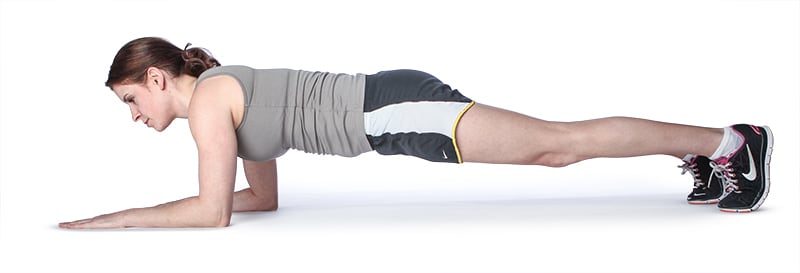
Front plank (above). Start from the floor and rise to the hold position. This gets you to a level body position almost 100 percent of the time. Your hips will go too high when you try to start in the up position.
Lie face down on the floor, toes curled under and pointed toward your trunk. Your forearms are on the floor, shoulder width, parallel with your trunk, hands flat on the floor.
Tighten your ab muscles and raise your body off the floor. You will stop at level position without thinking.
Hold for at least 20 seconds, then rest for 10 seconds. Do three reps.
Side plank (top). Start out lying on one side, legs extended straight along the body line, one foot on top of the other. Your forearm should be under the shoulder, arm forming an "L."
Raise your body up so it forms a diagonal plane, keeping the straight line.
Hold for 20 seconds, then rest for 10 seconds. Do three reps, then repeat on the other side.
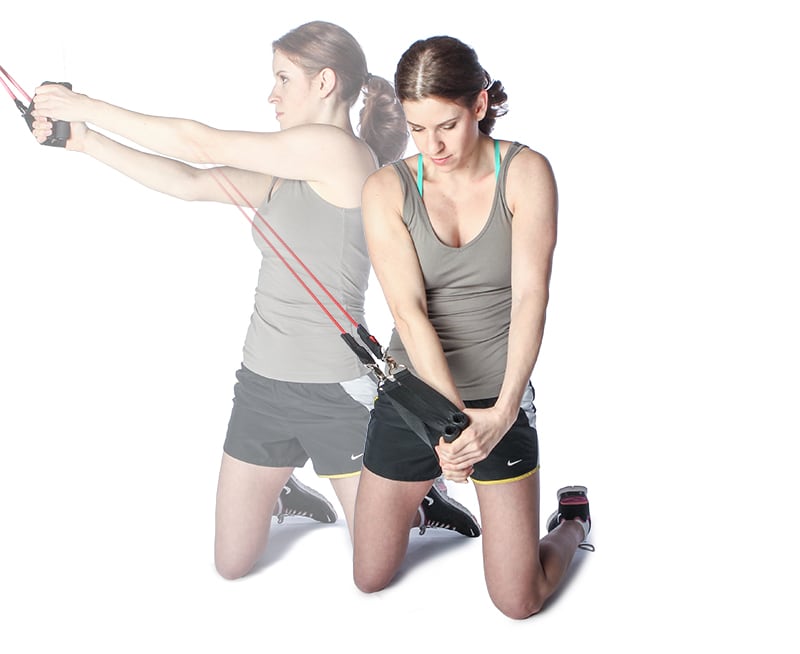
KNEELING CHOP
Using a cable machineor resistance bands, position yourself so the cable or tube handle is just behind one of your shoulders.
Reach back and grasp the handle with both hands. Arms should be almost straight. You will be in a slight rotation.
Keeping arms straight, start the rotation with your abs and guide the handle down toward the opposite knee. The movement will be an arc.
Your head should follow the hands to keep from having the arms do most of the pull. Hold for a two-count, then reverse the movement back to start.
Do five reps in each direction. The progression is to increase reps and then, in small increments, increase resistance.
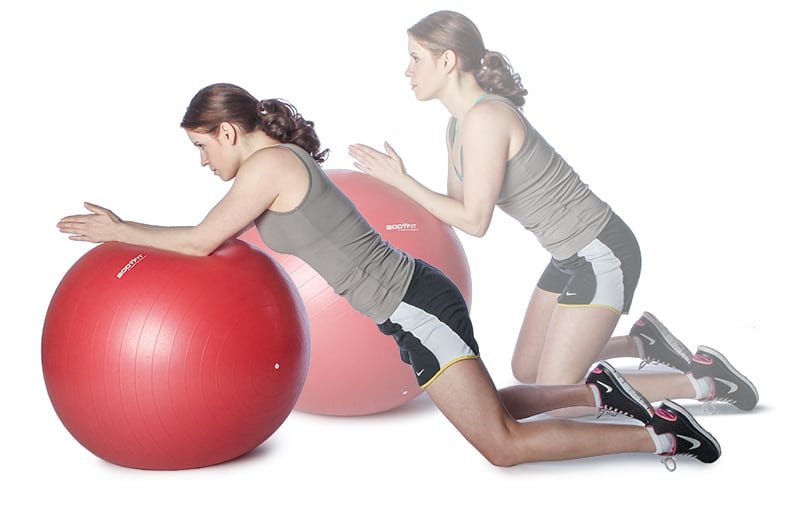
STABILITY BALL PRAYER ROLL
Support your upper body with forearms on a stability ball — aka "physio ball," "yoga ball," etc. — with hands resting just before the middle point of the ball. Support your lower body with your knees and toes.
Set your core muscles to stabilize your spine.If you drop your hips and arch your back during execution, you have lost control and should reset.
Roll the ball out slowly. Your arms will move with the ball, and your legs will straighten until you're almost in extended position.
Hold the extended position for a two-count, then return to start, pulling with your ab muscles — not your arms or legs. Remember: If you drop your hips and arch your back, you should reset.
Do five reps. For the progression, you can change the hand and forearm position to be lower on the ball; as well as increase reps.
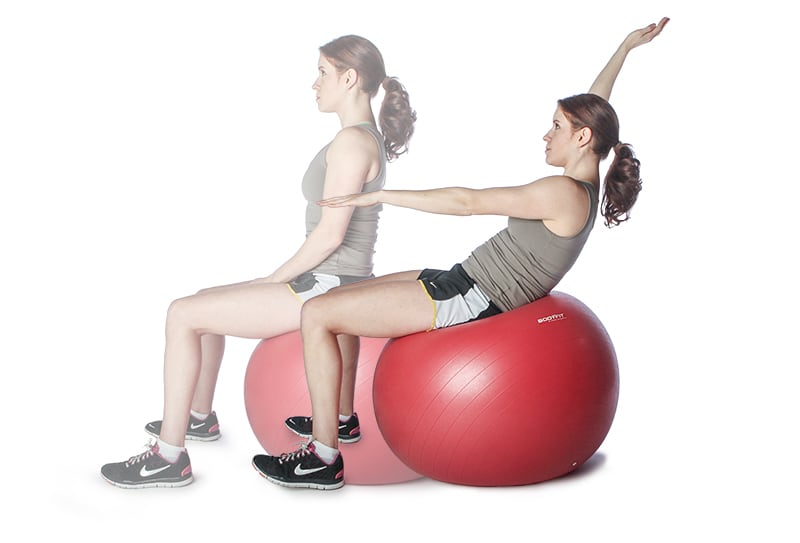
SEATED STABILITY BALL HOLD
Sit in the middle of the ball with feet on the floor.
Set your core muscles and slowly lean back to a 45-degree angle.
Raise one arm until it forms a straight line with your trunk.
Hold for a five-count, lower, and repeat with the other arm.
Do five reps on each arm. For the progression, hold small weighted balls in your hands.
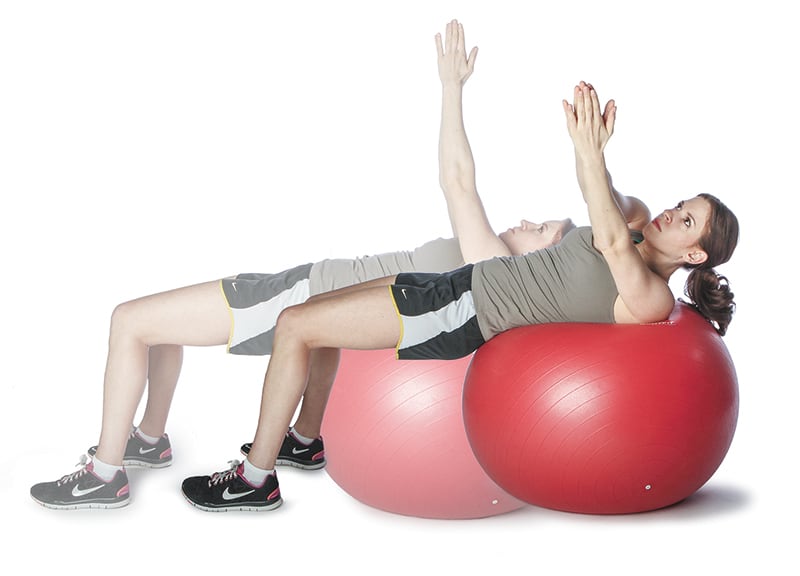
STABILITY BALL UPPER-TRUNK ROTATION
Starting in a seated position, slide down the ball into a bridge position with your neck and shoulders balanced on the middle point of the ball. Hips are level with your trunk, legs form an "L," arms are pointed toward the ceiling.
Keep hips straight and rotate your upper body either right or left. Arms rotate so that they remain pointed straight out away from your body.
Hold for a two-count, then rotate slowly to the other side, concentrating on using the core muscles to effect the rotation back. You should stop the rotation when you cannot keep your hips controlled.
Start with five reps in each direction. For modification, keep the rotations small and focus on keeping the bridge position for 60 seconds. Move to bigger rotations and a set number of reps as you get better.
Demonstrating this workout is Army civilian Lauren Pascale, 27, is a protocol specialist at the Pentagon and a competitor in the bikini division of competitive bodybuilding. (Photos by Jennifer Milbrett/Staff)
And if she looks familiar, it's because she's been on the PT365 pages before – demonstrating this workout.
Do you want to be in an upcoming issue? Here's how.
___________________

Retired Navy Cmdr. Bob Thomas has been our Military Muscle columnist since 2007. He's the director of the Navy Wellness Center in Pensacola, Fla. He's his base's lead trainer, a wounded warrior program facilitator and the Navy nutrition counselor there. His special emphasis is on fitness for the military retired population. Find his Military Muscle columns here.





